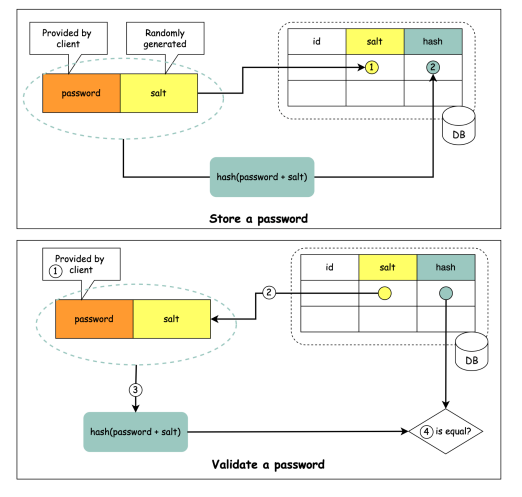Storing password is critical for any application. If you do not take right precaution then you loose your user password to attacker. For password security, storing password in plain text in database is certainly a bad design. Hashing password is well known but unfortunately it is also not enough. As we know that when user tries to log in, the hash of the password they entered is checked against the hash of their password in the database. If the hash matches, the user gains access to the account. If an attacker gains access to password database, they can use the rainbow table attack to compare hashed passwords to potential hashes in the table. The rainbow table then gives plain text possibilities with each hash, which the attacker can use to access an account. For example, if attacker has a rainbow table with the hash for the password “welcome123” any user that uses that password will have the same hash, so that password can easily be cracked.
To mitigate this attack, we use password salting. As per OWASP “a salt is a unique, randomly generated string that is added to each password as part of the hashing process”.
The password in the database can be stored in the following format Hash(password + salt). A salt randomizes each hash by adding random data that is unique to each user to their password hash, so even the same password has a unique hash. If someone tried to compare hashes in a rainbow table to those in a database, none of the hashes would match, even if the passwords were the same.

Nonetheless, rainbow tables may not be the biggest threat to organizations today. Still, they are certainly a threat and should be considered and accounted for as part of an overall security strategy.